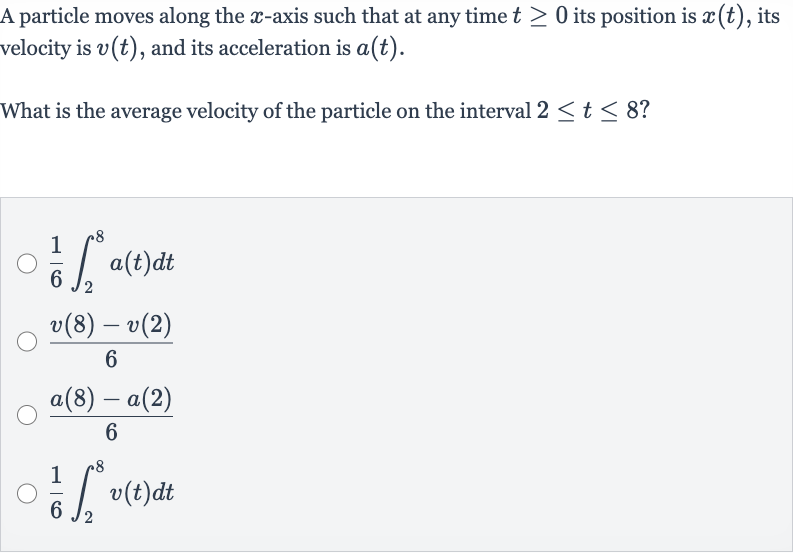Full solution
Q. A particle moves along the -axis such that at any time its position is , its velocity is , and its acceleration is .What is the average velocity of the particle on the interval
- Define Average Velocity Formula: To find the average velocity of the particle over the interval from to , we need to use the formula for average velocity, which is the change in position over the change in time.
- Calculate Change in Position: The change in position, , is given by the integral of the velocity function from the start time to the end time. So, .
- Determine Change in Time: The change in time, , is simply the difference between the end time and the start time, which is .
- Calculate Average Velocity: The average velocity, , is then , which can be written as .
- Substitute Values: Substituting the values we have, the average velocity is * .
- Verify Correct Expression: The given expression for average velocity is , which matches our derived expression. Therefore, the correct expression for average velocity is .
- Identify Incorrect Options: The other given options, , , and , do not represent the average velocity correctly. The first is the average rate of change of velocity, the second is the average rate of change of acceleration, and the third is incorrect because acceleration is not directly used to calculate average velocity.
More problems from Relate position, velocity, speed, and acceleration using derivatives
QuestionGet tutor help
QuestionGet tutor help
QuestionGet tutor help
QuestionGet tutor help
QuestionGet tutor help
QuestionGet tutor help
QuestionGet tutor help
QuestionGet tutor help
QuestionGet tutor help

